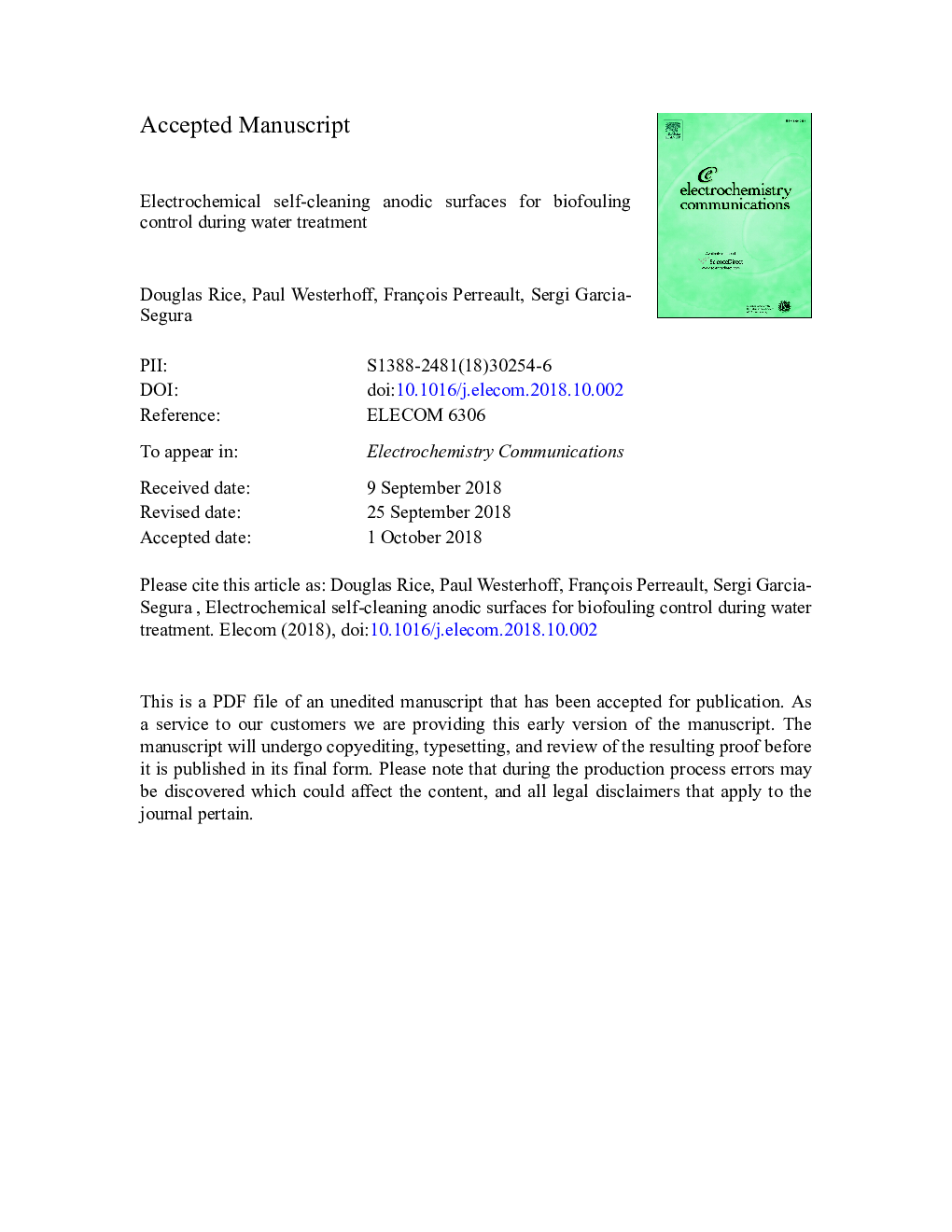| Article ID | Journal | Published Year | Pages | File Type |
|---|---|---|---|---|
| 11028319 | Electrochemistry Communications | 2018 | 18 Pages |
Abstract
Biofilm formation and growth on submerged surfaces causes numerous operational problems, ranging from hindering diffusion of pollutants to electrode surfaces during electrochemical water treatment to harboring pathogens in indoor plumbing. This work evaluates electrochemical biofilm dispersion kinetics from boron-doped diamond (BDD) surfaces in situ using optical coherence tomography microscopy to track the volume of biofilm (biovolume) on the electrode. After starting with a 75â¯Î¼m thick biofilm, applying 50â¯mAâ¯cmâ2 results in near complete biofilm removal after 60â¯min, with a pseudo first-order biovolume removal rate of 0.023â¯minâ1; higher applied currents had negligible additional benefits. Thus, it appears plausible to attain biofouling mitigation through electrochemical self-cleaning of BDD electrodes, potentially via the following two-step process: 1) hydroxyl radical production on the electrode surface which oxidizes polysaccharides or other cellular materials that attach bacteria to surface, followed by 2) gas evolution on the electrode surface (beneath the biofilm), which pushes and sloughs off the biofilm. This novel approach to biofouling management can find applications in electrochemical water treatment and other important surfaces (e.g., electrodes, membrane spacers, heat exchange surfaces, interior pipe surfaces, etc.) in water treatment systems where biofilms develop and harbor microbial pathogens.
Related Topics
Physical Sciences and Engineering
Chemical Engineering
Chemical Engineering (General)
Authors
Douglas Rice, Paul Westerhoff, François Perreault, Sergi Garcia-Segura,
